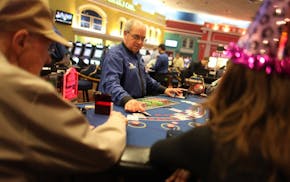We are seeing honeybees nectaring on white clover, bumblebees on our hosta flowers, yellowjackets at our picnics and countless wild bees visiting garden tomato and cucumber flowers.
Before a plant can produce fruit or seeds, the flowers must be pollinated, and although many important plants such as grasses are pollinated by wind, others depend upon insects.
Every year we have a multibillion-dollar job performed for us, virtually free of charge, when this pollination job is done by bees and other insects. We have fruits and vegetables because insects carry male pollen to female flower parts.
The stinging equipment of bees and wasps is a modification of the egg-laying apparatus, so it's not possible for the male to sting. Unlike honeybees, bumblebees have no barbs on their stinging probe, and a female bumblebee does not lose her weapon when she uses it. She can sting repeatedly. None of us should fear bumblebees, but we should maintain a healthy respect. This, together with sensible precautions when around them, will help to alleviate fear. These insects are important. We can live with them without trouble if we remember a few things. Tips to avoid getting stung:
• Sometimes it's necessary to wear a hat and gloves, long sleeves and pants when cutting the lawn or pulling weeds. Khaki is an ideal color; bright colors attract insects.
• Perfumes, scented lotions, hair spray and food smells attract stinging and biting insects.
• Don't try to swat an insect. Rather, act like a tree and move slowly.
If you are stung and have a strong reaction, get medical help. Many who are allergic to stings carry an emergency kit equipped with an injection of adrenaline and antihistamine tablets.
Jim Gilbert taught and worked as a naturalist for 50 years.

